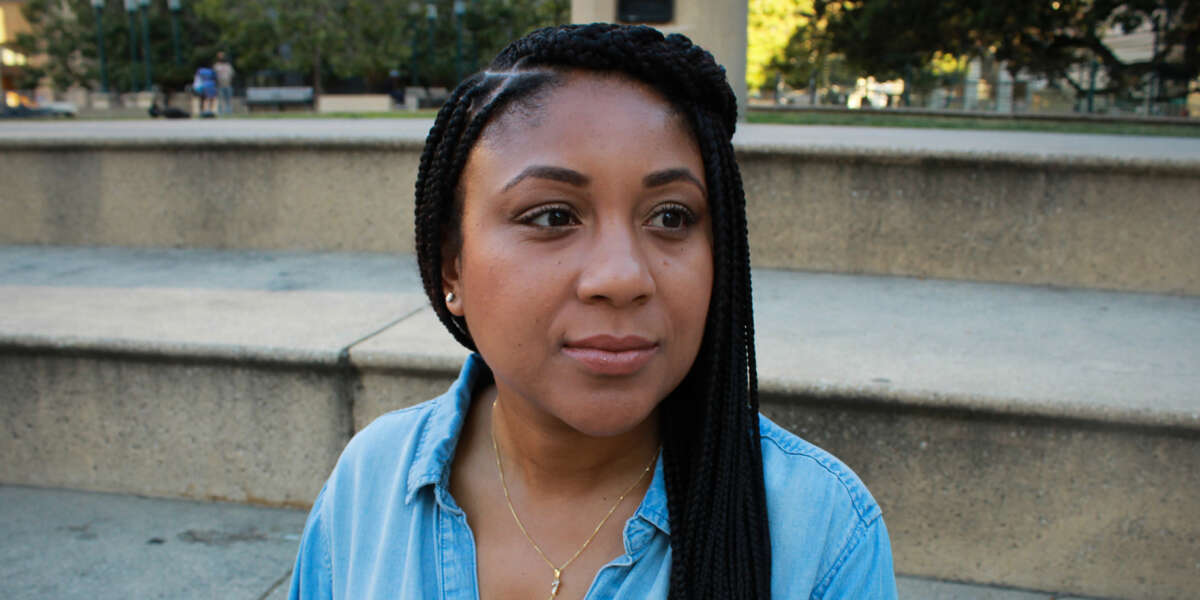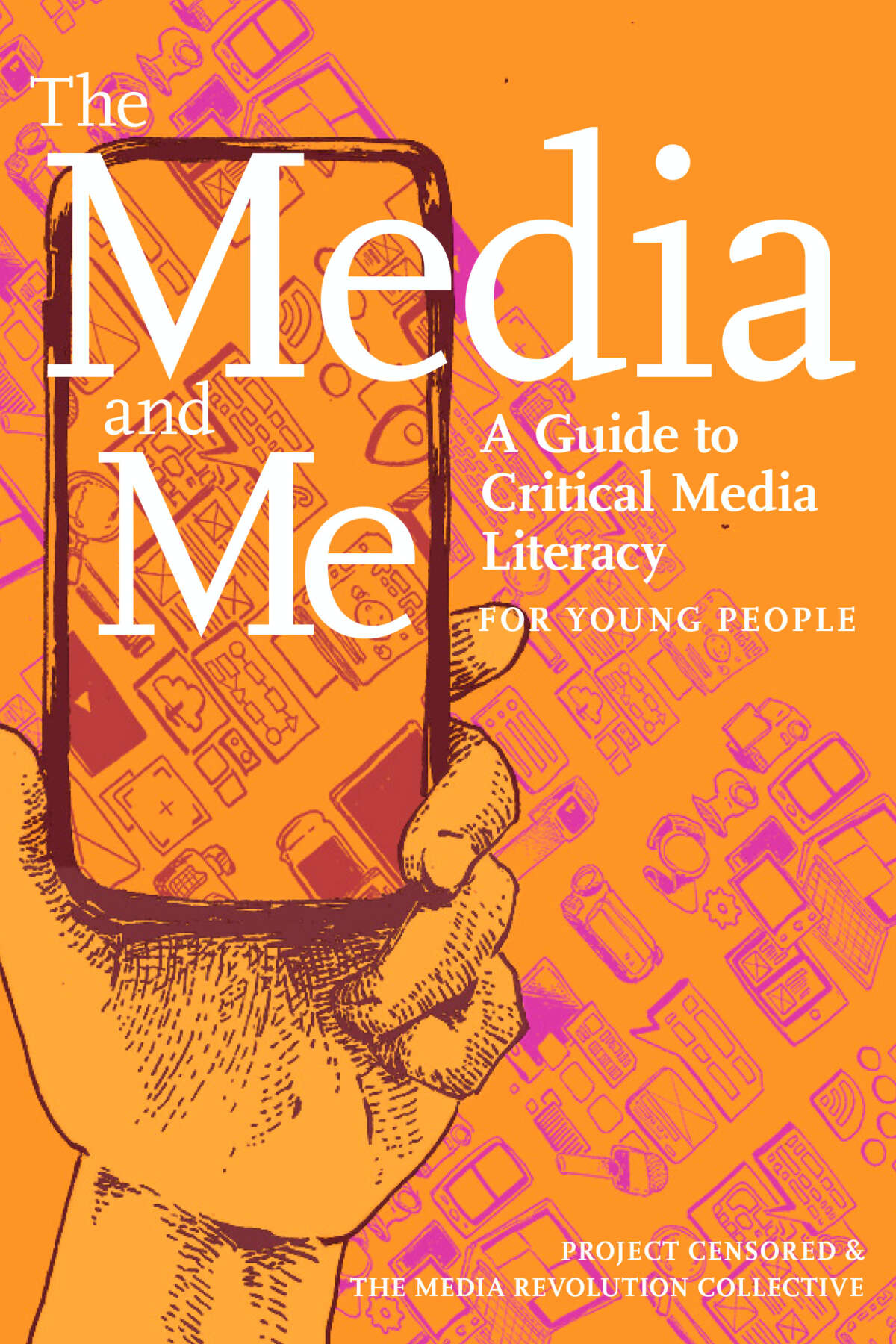Research tells us that young people between the ages of 8 and 18 spend an average of 11 hours a day engaged with some form of media, and yet we teach them very little about how to analyze and understand what they are seeing and hearing. Unlike some other countries, the United States does not consistently include media literacy training in public school curricula. As a result, young people are immersed in — and too often manipulated by — a media ecosystem that they don’t understand.
A new book, The Media and Me: A Guide to Critical Media Literacy for Young People, by Project Censored and the newly formed Media Revolution Collective, aims to change that by giving young people an essential primer on how to actively engage with, critique and push back on media. In the exclusive Truthout interview that follows, Reina Robinson, a contributor to The Media and Me who is also the CEO of the Center for Urban Excellence, a nonprofit that fosters resilience in system-involved youth, discusses why critical media literacy is an essential skill that should be taught to all students.
Peter Handel: Young people spend an unprecedented amount of time interacting with media, and they often “media multitask.” Tell us what this means and how young people are impacted by it.
Reina Robinson: As an alternative education educator, I’ve observed the considerable amount of time youth engage with media and practice “media multitasking.” To my understanding, “media multitasking” refers to using multiple mediums simultaneously, like texting on a cell phone while watching a movie. Many youth have grown up digital and are actively in an environment where access to media is omnipresent.

It can be argued that practicing media multitasking can provide youth with faster access to information, a sense of connectedness, community and fun. On the contrary, opponents of media multitasking believe it can interfere with learning and memory, as it can be challenging to concentrate on multiple sources of information fully and can lead to increased stress, as youth may feel pressure to keep up with the constant flow of information and activities (fear of missing out or FOMO).
It’s essential that we all are aware of the inner workings of the media, as well as understand why we may be compelled to media multitask. This understanding will aid in developing the skills and strategies necessary to engage with the media in a balanced way and have a robust understanding of how it works.
Adults have been concerned about the effect of media on kids for a long time. What is different about how young people interact with media today as opposed to the pre-internet and pre-web 2.0 eras?
As technology continues its rapid evolution, a crucial difference between how youth interact with media in the past and today is the sheer amount of available media. The expansion of the internet and growth of social media platforms has provided access to what seems like an endless amount of media content, including videos, music, games, news, and more.

Other differences I recognize are how youth create, share and consume media today. In the past, we were limited to traditional platforms to create and share, like sharing art in a gallery for visual artists and your song on the radio for musicians, while today, youth have a plethora of digital tools at their disposal to design media like blogs, podcasts and video channels.
Pre-internet media consumption was considered a passive activity, with people mostly consuming media through mediums like TV, radio and print. Today, we see youth are much more likely to actively seek out and curate their media content, using digital applications, search engines, social media, and other online platforms that support virtual (VR), mixed (MR) and augmented realities (AR).
Lastly, let’s remember that adults are always concerned (and for good reason) and the way youth interact with the media today is and will continue to be different than it was in the past. That’s why books like The Media and Me are important for such a transformative time in media and technology as we continue our evolution into web 3.0. We hope that you discover many of the adult concerns are addressed in the book in a way that doesn’t talk down to youth.
You are part of something called the Media Revolution Collective, which aims to give young people the skills they need to critically evaluate media. What are some of the other grassroots efforts to educate kids and how do you work with them?
In addition to the critical evaluation and understanding, we hope to help youth simply understand the ways media can shape their thoughts, feelings and behaviors.
It is difficult to find Critical Media Literacy education tools for youth that aren’t tied to corporate dollars. Many of the organizations committed to Critical Media Literacy efforts for youth that I’m most familiar with are connected to this Collective through prior research projects, partnerships, conference crossings and/or board appointments, etc. Below is website information on initiatives and useful online resources with website blurbs:
- Project Censored educates students and the public about the importance of a truly free press for democratic self-government. We expose and oppose news censorship and we promote independent investigative journalism, media literacy and critical thinking. Through our website, weekly radio program, annual book, and other programs, we provide this service to the United States, Canada, UK, and the world.
- Mass Media Literacy is committed to ensuring that people have access to critical media literacy education. We work with school systems, libraries, community groups, and especially teachers, to deliver training, curriculum, research and resources that promote the integration of critical media literacy education into K-12 classrooms.
- Center for Urban Excellence fosters resilience in system-involved youth through education, economic, social and artistic opportunities. We expose youth to experiences and opportunities that help them to become anti-fragile. We provide a free digital media literacy guide for high school and Transition Age Youth [ages 16-24] alternative education educators.
- Critical Media Project is a free media literacy web resource for educators and students (ages 8-21) that enhances young people’s critical thinking and empathy, and builds on their capacities to advocate for change around questions of identity.
- The Society of Professional Journalists is the nation’s most broad-based journalism organization, dedicated to encouraging the free practice of journalism and stimulating high standards of ethical behavior.
Many of us are more attuned to overt racism and sexism in media than ever, but you discuss how these biases have become more subtle as media have evolved. Talk about this. What are some examples? What impact does this have?
It seems that media bias has taken on a more subtle and insidious form as technology and media continue to advance. An example of this can be seen in facial recognition technology, where algorithms have been found to possess a higher error rate in identifying individuals with darker skin tones, perpetuating and amplifying pre-existing societal biases which have real-world implications, like wrongful arrests and improper surveillance of marginalized communities.
Another example can be seen in online advertising, where algorithms have been found to show different ads to different groups based on their browsing history and past interactions with the platform. I call what these corporations are doing “digital casting,” as they categorize people simply to sell to them. This digital filtering and limiting can lead to disparities in opportunity and access to information.
What some may call “subtle bias,” many folks in our communities feel daily because the effects of discriminatory practices and behaviors in society are haunting new technology and attempting to place limits on people. Through education and conversation, we can bring awareness to algorithmic bias and push for a future society that is just and equitable for all.
Concern about the amount of misinformation that is so readily available online today is widespread. We are often told that some form of censorship or infringement on free speech is necessary given the way media has evolved. What do you say to this?
Misinformation can wreak havoc on society. Unfortunately, the ubiquity of the internet and the speed at which information can be shared via social media has made it all too easy for misinformation to spread, as we’ve seen with tragic results during the Trump era and the COVID-19 vaccine rollout. But censorship or curbing free speech doesn’t solve our issues. Instead, the key lies in empowering individuals to evaluate and analyze the information they encounter and developing the skills necessary to identify and resist disinformation. In order to begin addressing this problem, the focus should be shifted to identifying and addressing the root causes of misinformation, which frequently stem from the underlying economic and political interests of those who propagate it.
We can achieve this by continuing the fight for increased transparency and accountability in media and fostering diverse and independent media ecosystems that can provide accurate, ethical and reliable information to the public. Through these efforts, we can work toward creating a more informed and empowered society.
Talk about multiple literacies and how we can help young people develop them.
In a media-rich society, multiple literacies refer to the various skills, knowledge and competencies that individuals need in order to navigate and make sense of the complex and diverse media landscape. In chapter five of The Media and Me, we speak to multiple literacies and ask the reader to expand the idea of “literacy” past the traditional forms. This chapter dives into visual literacy (visual representation like memes and film), aural literacy (analyzing and interpreting the meaning of sound), digital and algorithmic literacy (focus on digital media and big tech programming), as well as looking into the future of metaverse literacy (experience engaging with AR [augmented reality], MR [mixed reality] and VR [virtual reality]).
An important strategy to help youth develop multiple literacies is to equip them with the critical thinking skills and knowledge needed to effectively evaluate, analyze and act with media. This includes teaching youth how to reflect on personal media use, the media they choose to engage with and how to analyze media messages and representations. Within chapter five, there are four call-out boxes with activities to help strengthen this skill.
Another way to help youth develop multiple literacies is to provide them with opportunities to engage the media and technology actively. This can involve providing access to a range of media and technology resources, and encouraging them to create, produce and share their own media content. Not only will it help youth develop skills and competencies needed to effectively use and create media, but it will also help them to understand the broader social, cultural and political contexts in which the media operate.
This article has been lightly edited for clarity.
We have 10 days to raise $50,000 — we’re counting on your support!
For those who care about justice, liberation and even the very survival of our species, we must remember our power to take action.
We won’t pretend it’s the only thing you can or should do, but one small step is to pitch in to support Truthout — as one of the last remaining truly independent, nonprofit, reader-funded news platforms, your gift will help keep the facts flowing freely.
